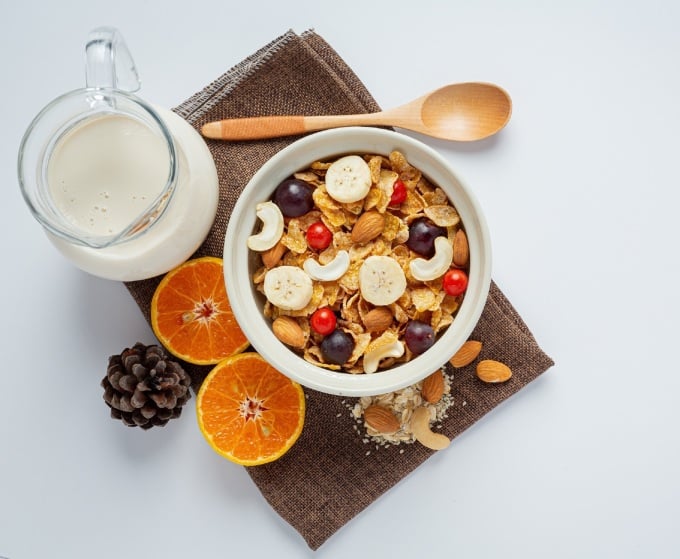Boiled eggs, smoothies, and soft, easily digestible oatmeal are suitable breakfast options for people with gastroesophageal reflux disease.
People with this condition often experience acid reflux, heartburn, belching, and a sour taste in their mouth, especially after eating. Below are some breakfast suggestions to help alleviate these discomforts.
Boiled eggs
People with gastroesophageal reflux disease (GERD) should avoid fried eggs in butter or oil. Hard-boiled or baked eggs are a better option. Eating hard-boiled eggs with ginger tea aids digestion. Adding a low-sugar granola bar (a baked mixture of oats, nuts, dried fruit, etc.) to this meal provides extra fiber.
Oatmeal
Oatmeal is not only good for the heart but also absorbs stomach acid, helping to control symptoms of gastroesophageal reflux disease (GERD). Patients should add papaya or banana to oatmeal to enhance flavor and avoid irritating the intestines. Papaya also contains the enzyme papain, which helps reduce heartburn.
Cereal
Patients should eat several small meals to avoid putting pressure on the lower esophageal sphincter. A small bowl of whole-grain cereal with little sugar is a good choice for breakfast.
Use almond milk instead of cow's milk with your cereal to avoid worsening symptoms. Add some raisins and chopped nuts for sweetness and to increase protein intake.

Cereals and fruits are packed with nutrients, making them a great breakfast choice. Photo: Freepik
Whole grain baked goods
Breakfast should include muffins made from whole grains topped with nut butter or low-fat cottage cheese, which have minimal impact on the gut. Patients can combine this with low-acid fruits like peaches for added flavor and nutrients.
Smoothie
Drinking smoothies for breakfast provides essential nutrients, vitamins, and minerals for the body, and has a lower risk of acid reflux.
Bananas, strawberries, peaches, other non-citrus fruits, and fresh vegetables are generally well-tolerated and suitable for smoothies. Adding a tablespoon of unsweetened peanut butter or almond milk can provide additional protein and healthy fats.
Fruit and yogurt
Yogurt is rich in probiotics (good bacteria) that are beneficial for the gut and reduce symptoms of gastroesophageal reflux disease. Patients should choose low-fat or fat-free yogurt, which is easier to tolerate.
If you are lactose intolerant (lactose is a type of sugar found in milk), you can choose almond yogurt, coconut yogurt, and other fermented plant-based milks. Add low-acid fruits like peaches or apples and granola for a delicious breakfast.
Eating spicy foods, fatty foods, fried foods, pastries, coffee, alcohol, and citrus fruits can trigger acid reflux symptoms.
Here are some ways to help manage acid reflux.
Steaming or boiling is better than frying. If grilling or roasting, use as little oil as possible and avoid adding too many spices.
Avoid bending over while eating, as this can displace the lower esophageal sphincter, causing acid reflux. After eating, do not lie down; only lie down once your food has been completely digested.
Eat several small meals throughout the day instead of three large meals to reduce stress on the stomach and lower esophageal sphincter. Avoid eating right before bed; there should be at least two hours between meals.
Drink plenty of water throughout the day to dilute stomach acid. Alkaline water is a good option for controlling acid reflux. According to a 2020 study by the Federal University of Pará, Brazil, on 50 people, drinking water with a pH of 8.5-10 daily reduced acid levels and decreased stomach inflammation.
Mai Cat (According to Very Well Health )
Source link




![[Image] Close-up of the newly discovered "sacred road" at My Son Sanctuary](/_next/image?url=https%3A%2F%2Fvphoto.vietnam.vn%2Fthumb%2F1200x675%2Fvietnam%2Fresource%2FIMAGE%2F2025%2F12%2F13%2F1765587881240_ndo_br_ms5-jpg.webp&w=3840&q=75)













































































































Comment (0)